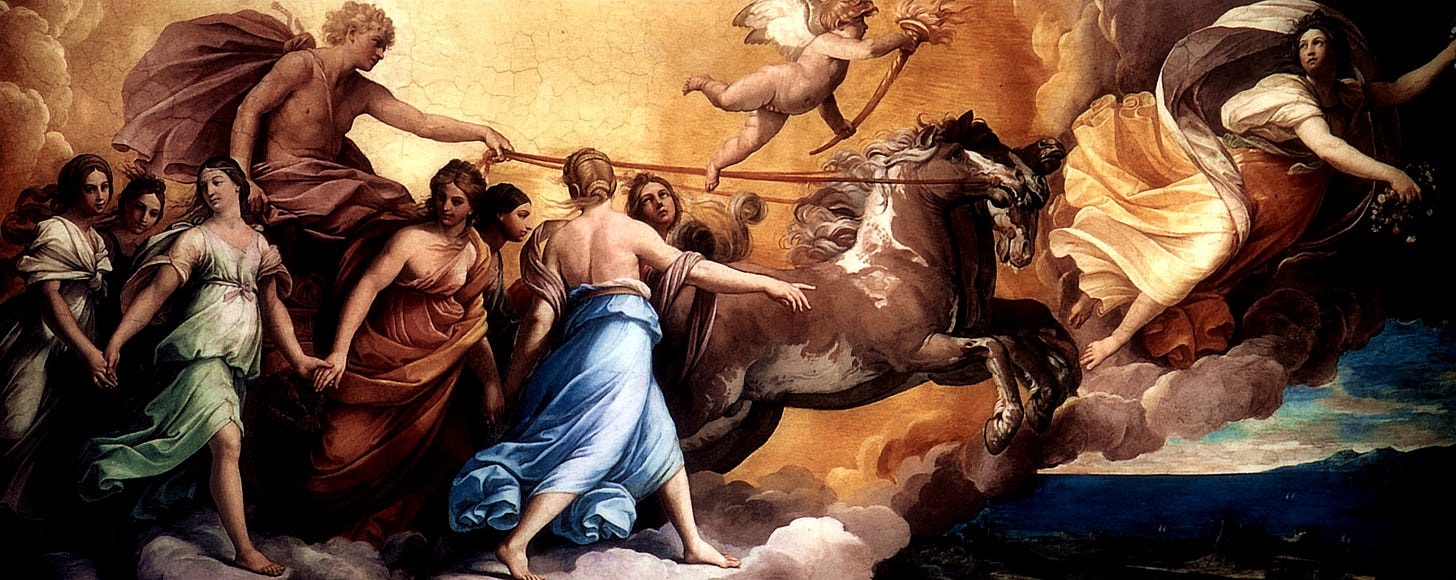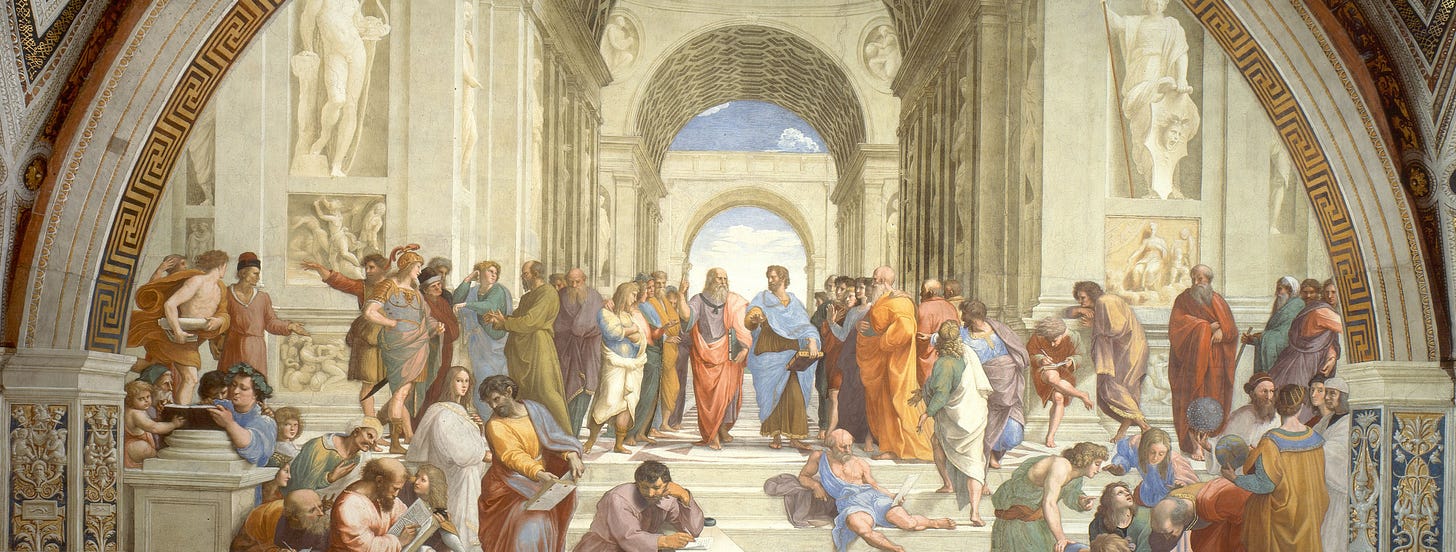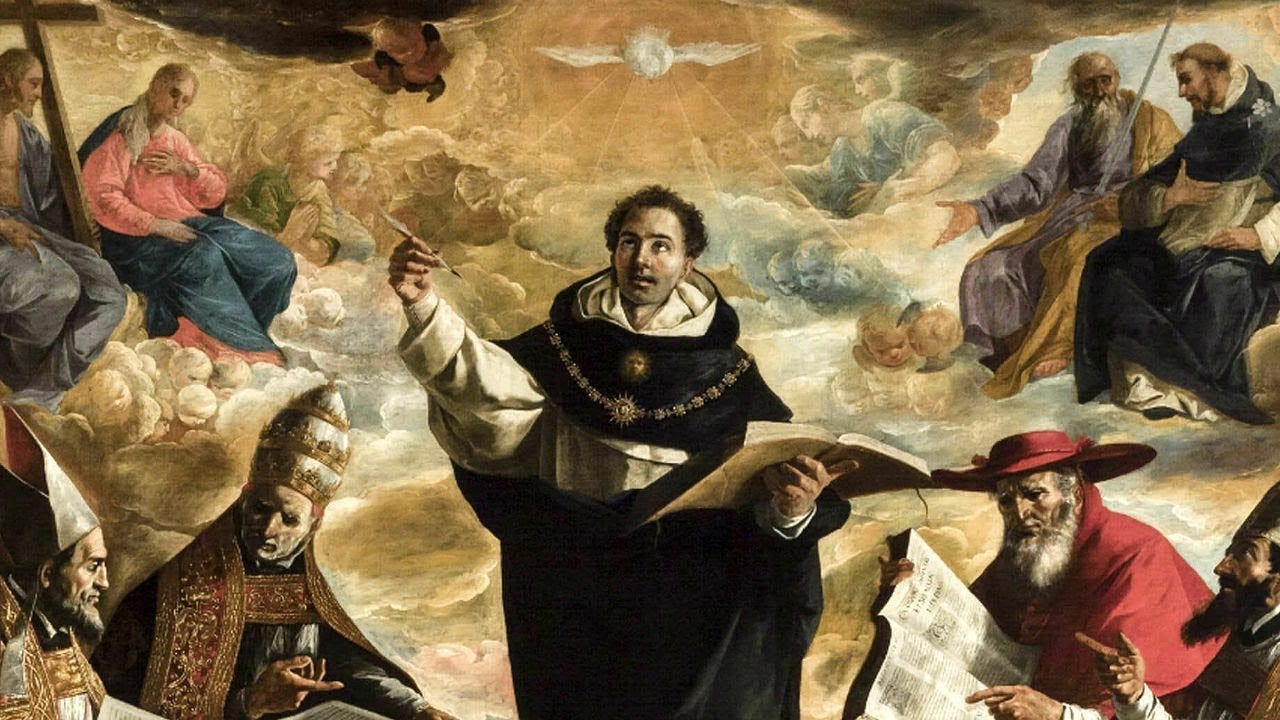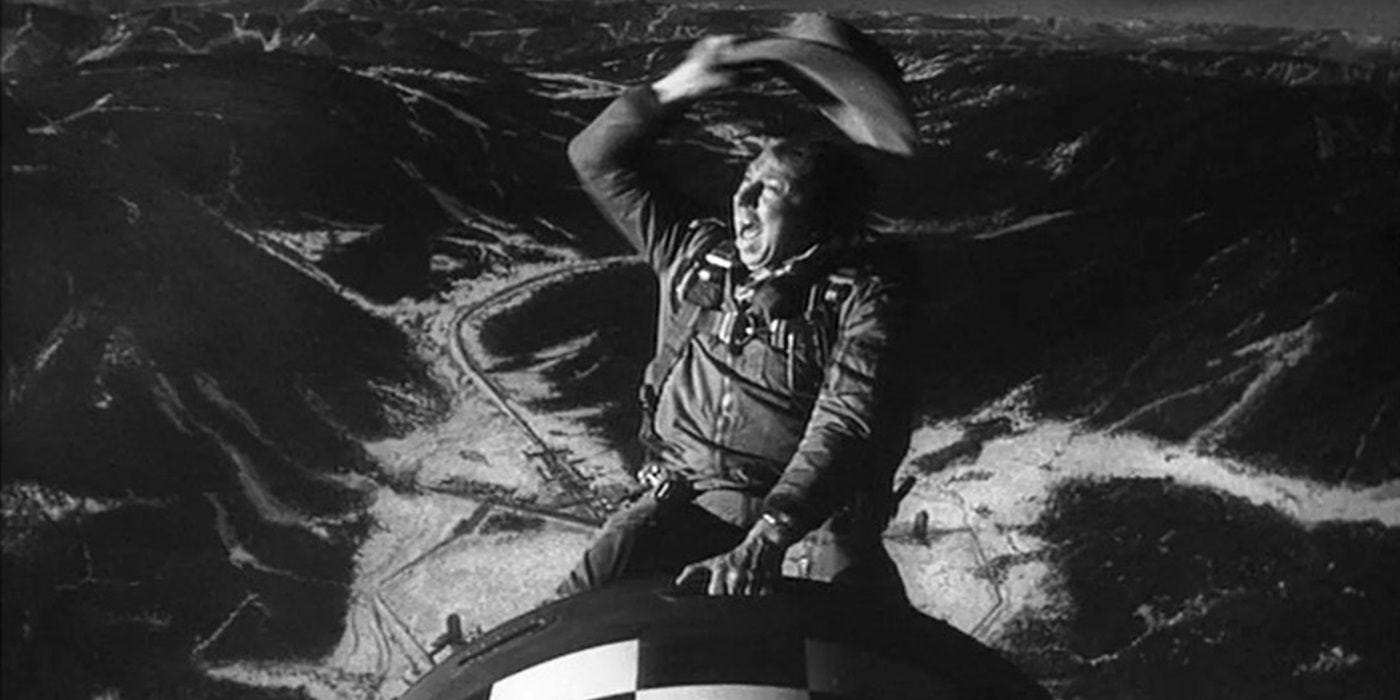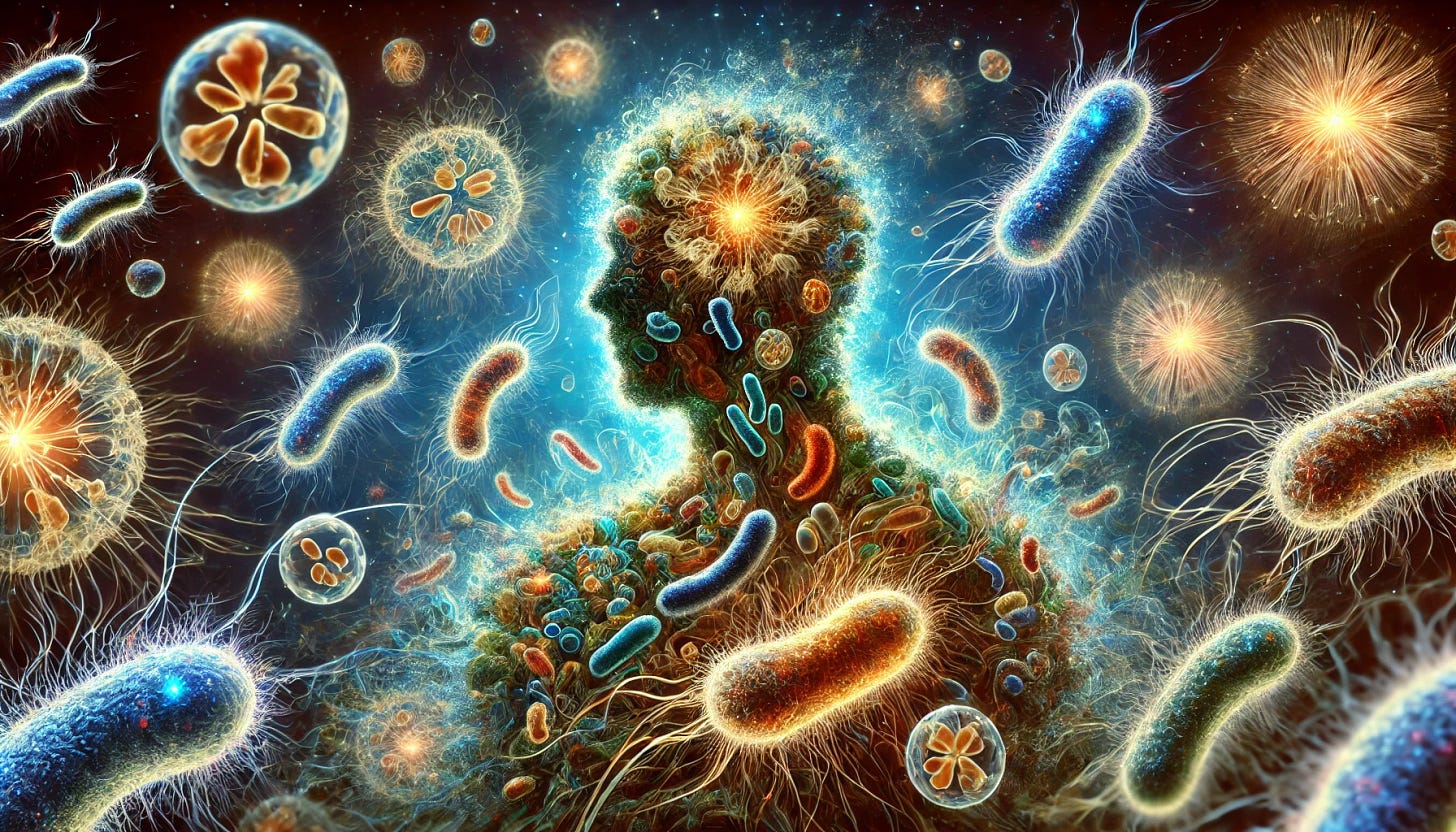In a few weeks, I’ll be launching a new show and podcast called The Whole Itself Remains, dedicated to the theory and practice of holism—something to which, albeit imperfectly, I have dedicated my life. This show will coincide with my school’s regular Q&A webinar, airing on our local radio station (CJMP.ca) and later posted to YouTube. While the show is free to listen to when it airs, you can join the post-show inner circle, where I open it up for questions and discussion, by registering for our Q&A webinar here. It's only $50 per year, and your support is integral to making this effort sustainable.
I’m definitely late to the podcast game when it seems that everybody already has one, but I have been teaching and public speaking for many years, so it’s really just a shift toward a different medium. I listen to a fair number of podcasts myself but haven’t come across many or any I resonate with on the subject of holism. In part, it might be because the word holistic has become kinda cringe. It originally denoted a kind of New Age earnestness, often associated with what many view as an unserious approach to health. More recently, it has been co-opted as a buzzword in certain anti-establishment circles, particularly on the political right.
For me, the theory and practice of holism have nothing to do with either of these associations. In fact, holism is exceptionally difficult to define—it is more of a pursuit than a destination. The term itself comes from the Greek word holos (ὅλος), meaning whole, and as a philosophical approach to life, is best represented by the teachings of Parmenides, often described as the Father of Metaphysics. He was the first in a lineage of the most famous of Greek philosophers that continued through Socrates, Plato, and Aristotle.
Parmenides and the Interconnected Universe
While these other philosophers are more familiar, Parmenides is lesser known, perhaps because only a fragment of his teachings remain, often referred to as On Nature (Περὶ Φύσεως). In this text, Parmenides describes in psychedelic detail an epic journey to the Heavens, attended by two maidens and carried in a horse-drawn carriage, to arrive at the feet of a goddess who welcomes and then proceeds to educate him on the existence of two fundamental paths of perception called truth (aletheia, ἀλήθεια) and opinion (doxa, δόξα).
Parmenides describes truth as an eternal, unchanging reality. For him, a thing can only be true if it does not change; and thus, any thing subject to change cannot be said to be true. The latter very much relates to the nature of opinions, which while seemingly true in the moment, upon deeper examination, or if observed over a length of time, are later understood as simplistic, inaccurate, and sometimes dead wrong. This is because an opinion contains within it the principle of uncertainty, expressing the inexorable law of change that is also a fundamental component of the teachings of Buddhism.
For Parmenides, to attain an awareness of truth means to perceive reality beyond the veil of change: to see the Universe and its past and present as an unchanging and indivisible Whole, motionless and resplendent in its eternal fullness. In many respects it's just another way to express the Buddhist spiritual goal of nirvāṇa (निर्वाण), which literally translates as the ‘cessation (nir) of movement (vāṇa)’. Like Parmenides, the essential Buddhist teaching is to cultivate the awareness of an eternal reality beyond the veil of change and the illusions of birth, suffering and death.
Several years ago I came across a paper authored by two physicists and although I could hardly grasp the science, I was taken with their explanation of quantum entanglement, and their thesis that if one could achieve a “god-like” state of awareness, the entire universe would cease to move. Quantum entanglement describes how two or more particles can become correlated so that the state of one instantly influences the other, no matter how far apart they are. While originally observed in particles separated by distance, this entanglement applies to all phenomena at a quantum level, suggesting that everything is interconnected—entangled—at a fundamental level. The ability to disentangle one’s consciousness from this ever-shifting quantum state is, in essence, to dwell in truth.
The Law of Identity vs. The Reality of Interconnection
As Parmenides’ foremost student, Socrates deeply respected his mentor’s teaching, but his own focus was less on metaphysics and more on ethics. Socrates, in turn, influenced Plato, who was concerned with fostering a good and just society, and Plato’s teachings profoundly shaped Aristotle. The latter is often considered the most influential of the Greek philosophers, in part because Aristotle’s works were preserved and later integrated into Church doctrine, influencing the development of the Western scientific tradition. Aristotle’s philosophy, however, diverges significantly from Parmenides, and in some respects, outright contradicts it.
Among Aristotle’s most influential contributions is his system of logic, particularly his Three Laws of Thought. The first and most important of these is the Law of Identity, expressed mathematically as A = A, meaning that a thing is what it is—identical to itself and distinct from all other things. In a debate, for example, this principle ensures clarity: if participants cannot agree on the terms of discussion, any meaningful dialogue becomes impossible.
Yet while this principle enhances logical precision, it also reinforces a worldview that prioritizes separation and distinction. This mode of thinking has permeated Western culture, fostering dualities such as mind versus body, human versus nature, and male versus female. Such dichotomies obscure the inherent interconnectedness of reality, as described both by Parmenides and by quantum mechanics, ultimately limiting our understanding of complex systems.
The Dualistic Legacy of Western Thought
As the Roman empire crumbled and evolved into the Church, some of the ancient world’s intellectual treasures survived, and in the case of Aristotle, were selectively integrated into Christian theology. While this synthesis provided for a robust intellectual framework, Aristotlean logic also reinforced a dualistic separation between spirit and creation, emphasizing God's transcendence over humanity, and a necessary hierarchy of intermediaries between individuals and the divine. This is despite Jesus emphasizing a direct relationship with the divine, in Matthew 23:9, saying, "And do not call anyone on earth 'father,' for you have one Father, and he is in heaven." The fact that priests are nonetheless addressed as "father" is just one example of the many contradictions elaborated by the Church.
The Church's use of Aristotelian logic to consolidate and maintain its power and influence in society left a lasting imprint on Western thought, ultimately shaping the development of modern science. Although science rejected the Church as an authority, it nonetheless retained this framework of distinction and separation, along with the Church’s preoccupation with hierarchy. This is evident in the scientific method, which defines and differentiates objects, phenomena, and categories with precision, mirroring the structured classification systems once used by the Church. Disciplines such as taxonomy further reflect this legacy, constructing hierarchical models of life. The primary difference between the Church and science, however, is that rather than relying on doctrinal authority, scientific knowledge is committed to empirical verification and falsifiability.
The Science of Unintended Consequences
To understand the universe, modern science is the best tool humanity has discovered thus far, but because of its inherent biases, suffers from serious limitations that result in unintended consequences. Modern life in particular is plagued with the detritus of these pursuits. Thus, “better living through chemistry” has resulted in microplastics being dispersed everywhere from the Mariana Trench, to the stratosphere, now replete within the food supply and finding its way into part of the body, including the brain. Likewise, the discovery of and experimentation with elementary particles has resulted in a stock-pile of nuclear weapons sufficient to completely eradicate three billion years of life on Earth.
In modern medicine, which could be argued is only partially scientific, an emphasis is likewise placed upon categorization and analysis, leading to a healthcare system where specialists focus on individual organs or systems, often viewing them in isolation. This compartmentalization often results in a disconnect between patient and doctor, where the patient is seen as a collection of parts rather than a whole person. Likewise, the reliance on surrogate markers used in lab tests typically overshadows the importance of listening to patients, leading to treatments that address symptoms in isolation rather than considering the individual's overall well-being. In the choice of therapeutics, modern medicine prefers the use of synthetic or semi-synthetic chemicals that typically have a narrow therapeutic window, meaning that there is little room for error or idiosyncratic differences in patients.
Humans are fallible, and given the millennia of socio-cultural influences, even those steeped in science often struggle to adapt to the fundamental law of change described by the Buddha. This resistance contributes to the persistence of belief structures with little empirical basis. In modern medicine, for example, many widely accepted medical "truths" are often taken as gospel, only to become outdated within a relatively short period.
This phenomenon, known as the "half-life of knowledge," was explored in a 2002 paper by Poynard et al., which analyzed research on cirrhosis and hepatitis dating back to 1945. The study found that within 50 years, half the medical knowledge in these areas had become obsolete or disproven. A more recent analysis suggests that the half-life of medical knowledge has been steadily decreasing: in 1980, it was estimated at seven years; by 2010, it had dropped to 3.5 years; and by 2020, some projections suggest it could now be as short as 73 days.
With the advent of AI, the acceleration of medical discovery could further compress this timeline, leading to frequent paradigm shifts in diagnosis and treatment. While this holds potential for improving patient outcomes, it also carries significant risks. Rapid changes in medical consensus may outpace the ability of practitioners to adapt, increasing the likelihood of conflicting recommendations, misapplied treatments, and unintended consequences. Furthermore, the pressure to integrate new findings without sufficient long-term validation could result in the premature adoption of interventions that later prove ineffective—or even harmful.
These developments are particularly concerning because, while modern medicine is meant to uphold the Hippocratic maxim “at the least, do no harm”, medical errors and adverse drug reactions already account for a significant disease burden. In 2005, the contentious paper Death by Medicine was published, estimating that preventable medical errors were the third leading cause of death in the United States. While the paper has faced criticism, a 2016 reappraisal of its central thesis suggests that its conclusions remain valid—possibly underestimating the true scope of the problem. If fully accounted for, medical errors would rank just below heart disease and cancer as a leading cause of death, surpassing even COVID-19.
A Paradigm Shift: From Specialization to Holism
As a holistic medical practitioner specializing in chronic disease, I frequently see patients whose treatments fail to fully address their needs—sometimes even making things worse. But for me, the solution isn’t simply replacing pharmaceuticals with medicinal herbs or supplements as gentler alternatives. Rather, it’s about cultivating a broader, more integrated awareness of all relevant factors.
For example, conventional and even naturopathic treatments for small intestine bacterial overgrowth (SIBO) often focus primarily on eradicating bacteria. A more holistic approach, however, considers the multiple factors that contributed to SIBO in the first place—including diet, lifestyle, gut motility, and stress—while also addressing the broader parameters of digestive health. This means optimizing the function of the stomach, liver, and bowels, supporting a balanced microbiome, and addressing the nervous, immune, and endocrine systems that regulate gut function. While this level of complexity can quickly become overwhelming, traditional holistic systems such as Ayurveda provide a remarkably sophisticated framework that makes it easier to understand and implement.
In contrast to Aristotle’s Law of Identity, Parmenides’ view of truth—and its corollaries in Buddhist philosophy and quantum physics—suggests that what we perceive as distinctiveness and separateness is, in many ways, an illusion. While categorization is useful, simply naming a thing does not fully define what it is, nor does it account for how it changes over time. A wooden chair, for example, is a chair only temporarily. In the past, it was a tree; in the future, it may become the embers of a fire. The Law of Identity serves as a logical device to describe reality as it appears in the moment rather than as something fundamentally true in an absolute sense.
Consider the human microbiome—the vast community of microorganisms that inhabit our bodies. These microbes are not merely passive residents; they play essential roles in digestion, immune function, metabolism, and even mental health. Far from being distinct, they form an inseparable, symbiotic relationship that is vital to our survival. The same principle can also be observed at a cellular level. For example, the mitochondria responsible for cellular energy production, possess their own DNA, distinct from the nucleus, thought to have originated from free-living bacteria that entered into a symbiotic relationship with our ancestral cells. Even our nuclear genome—the genetic code we consider uniquely human—is an evolutionary mosaic. Research shows that over 50% of the human genome is composed of transposable elements from non-human sources, including ancient viral insertions and bacterial genes, incorporated through horizontal gene transfer.
In this light, Aristotle’s Law of Identity—the notion that a thing is fully distinct from other things—loses its footing in biological reality. If anything, the emerging picture that science is developing is that our existence is perhaps best allied the Buddhist concept of anātman (अनात्मन्), or not-self—the idea that what we perceive as individual identity is, in fact, an ever-changing amalgamation of external and internal influences. The human body, rather than being a singular, self-contained entity, is more accurately described as a dynamic ecosystem—one that only suggests individuality but is, at its core, inherently interconnected with all life.
The Whole Itself Remains: A Mantra for Holistic Understanding
This state of interconnectedness is reflected in the title of my new show and podcast, The Whole Itself Remains, taken from the final line of the invocation to the Īśa Upaniṣad:
ॐ पूर्णमदः पूर्णमिदं पूर्णात् पूर्णमुदच्यते।
oṃ pūrṇamadaḥ pūrṇamidaṃ pūrṇāt pūrṇamudacyateपूर्णस्य पूर्णमादाय पूर्णमेवावशिष्यते॥
pūrṇasya pūrṇamādāya pūrṇamevāvaśiṣyateAum! That is the Whole. This too is the Whole.
The Whole comes out of the Whole.
Taking the Whole from the Whole,
The Whole itself remains.
I was taught this as a mantra many years ago while studying Ayurveda in India. Though its meaning is deeply spiritual, it also encapsulates the principle of holism in Ayurveda. For example, this philosophy underlies energetic diagnostic systems such as nāḍī parīkṣā (pulse diagnosis) and jivhā parīkṣā (tongue diagnosis). While these methods may seem disconnected from the organs they illuminate, understanding the body's interconnectedness reveals how each part contains a reflection of the whole—much like a hologram, where even a fragment of a holographic plate retains the entire image.
I realize some may find this level of philosophical discussion pedantic, but my intention is neither to impress nor to bore. Rather, it is to establish a foundation for the theory and practice of holism. In future writing and on this podcast, I will continue to explore this concept, grounding it in everyday realities—primarily in health and medicine—but also in other areas where holistic thinking could offer meaningful insights. If you have suggestions for topics, or if you know an expert in a field related to holism—from agriculture and architecture to zoonotic disease—I would love to hear from you. My hope is to connect to voices that can help chart a pathway toward a more holistic way of living.
Please join our Q&A webinar and the inner circle that continues after each show. Featuring robust and fascinating discussions, including getting your questions about health/wellness answered.




